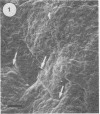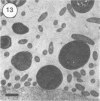Abstract
Microscopic techniques were used in conjunction with normal microbiological procedures to examine the development of the spoilage microflora on the skin of chicken carcasses held at 2 degrees C. Pigmented and nonpigmented psychrotrophic pseudomonads were the major spoilage bacteria isolated at all stages of storage examined. The spoilage microflora grow within a liquid film covering the skin surface, as well as in feather follicle shafts. Penetration and disruption of skin tissue were not observed even after onset of organoleptic spoilage. Bacteria were not attached to the skin by extracellular bridging substances. These data suggest a nonspecific histological-microbiological relationship between he spoilage association and the skin substrate.
Full text
PDF
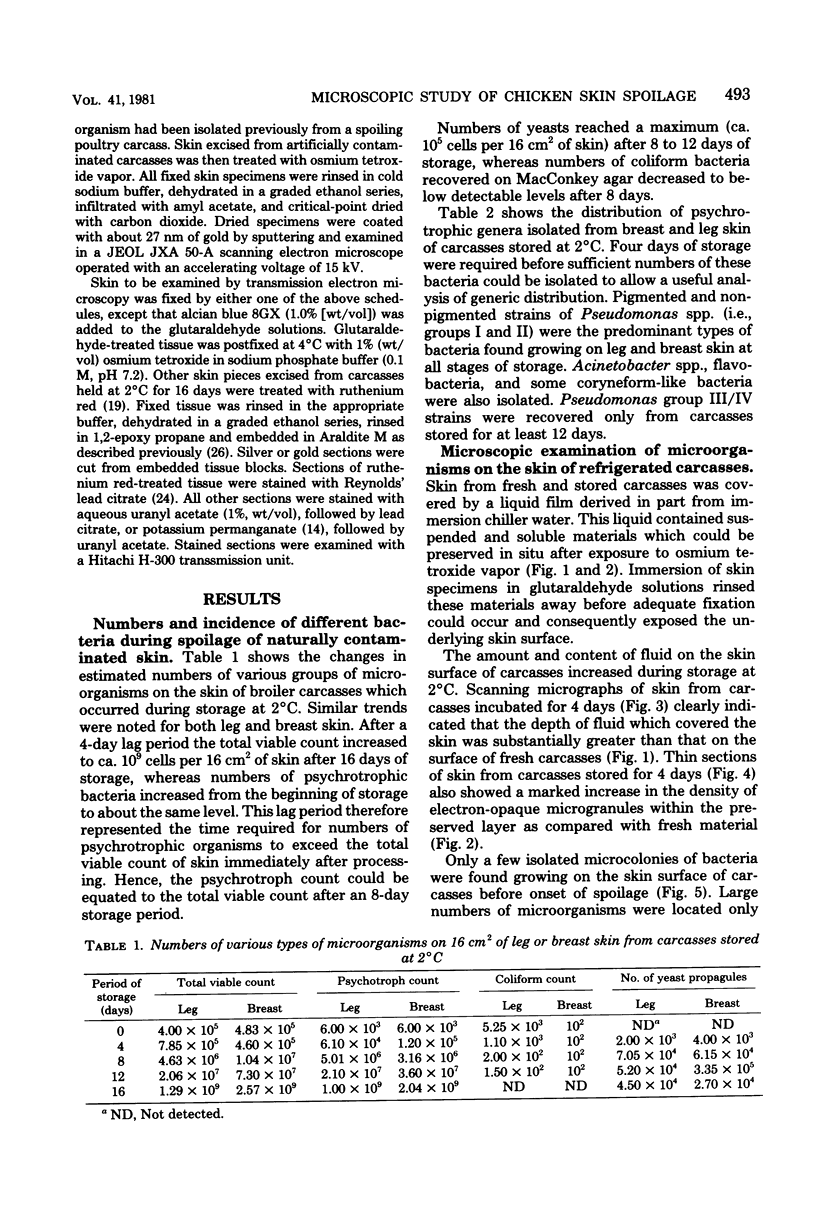



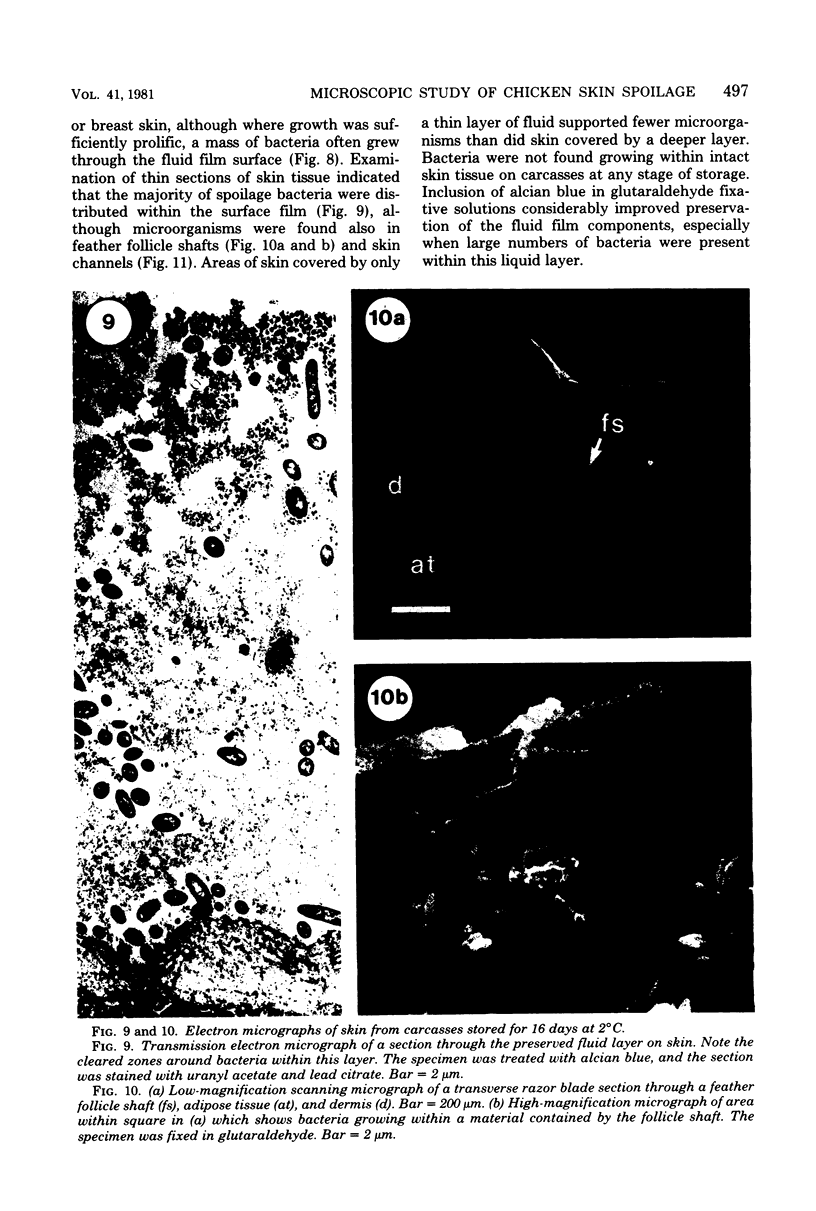
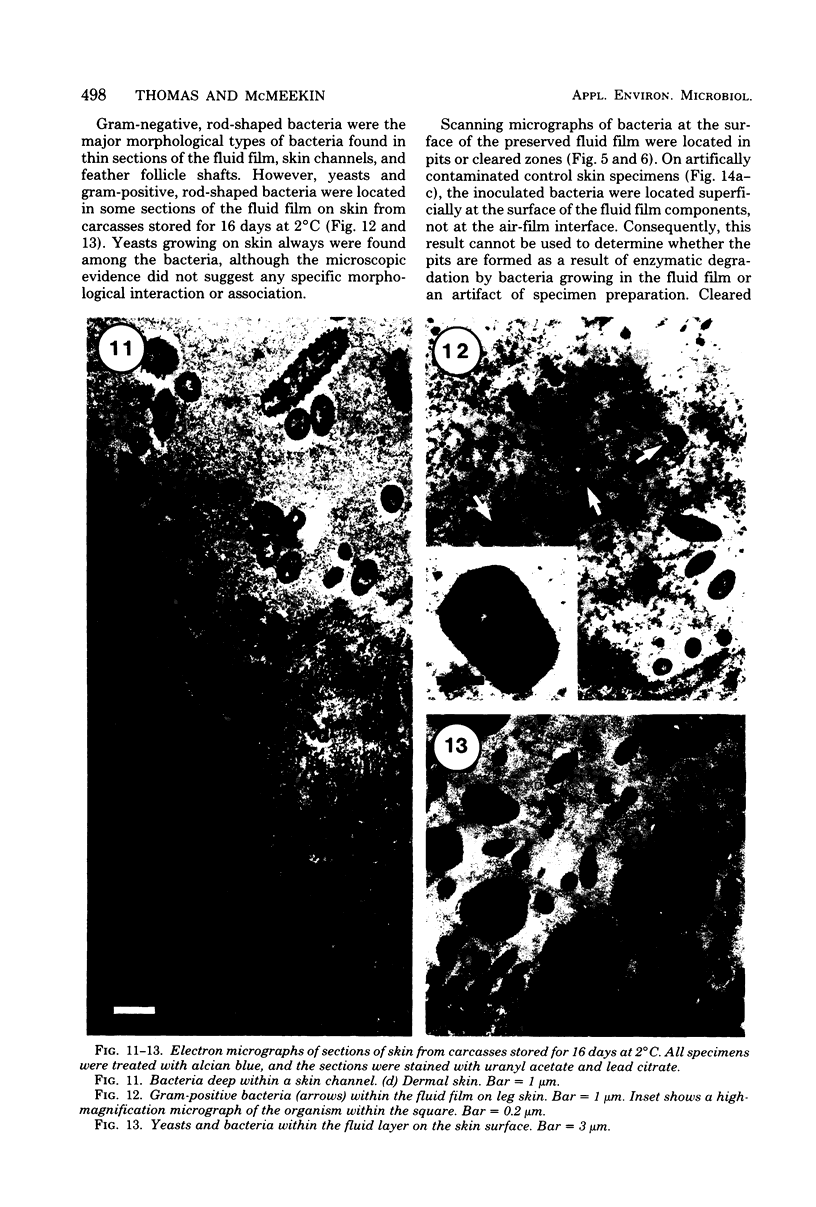

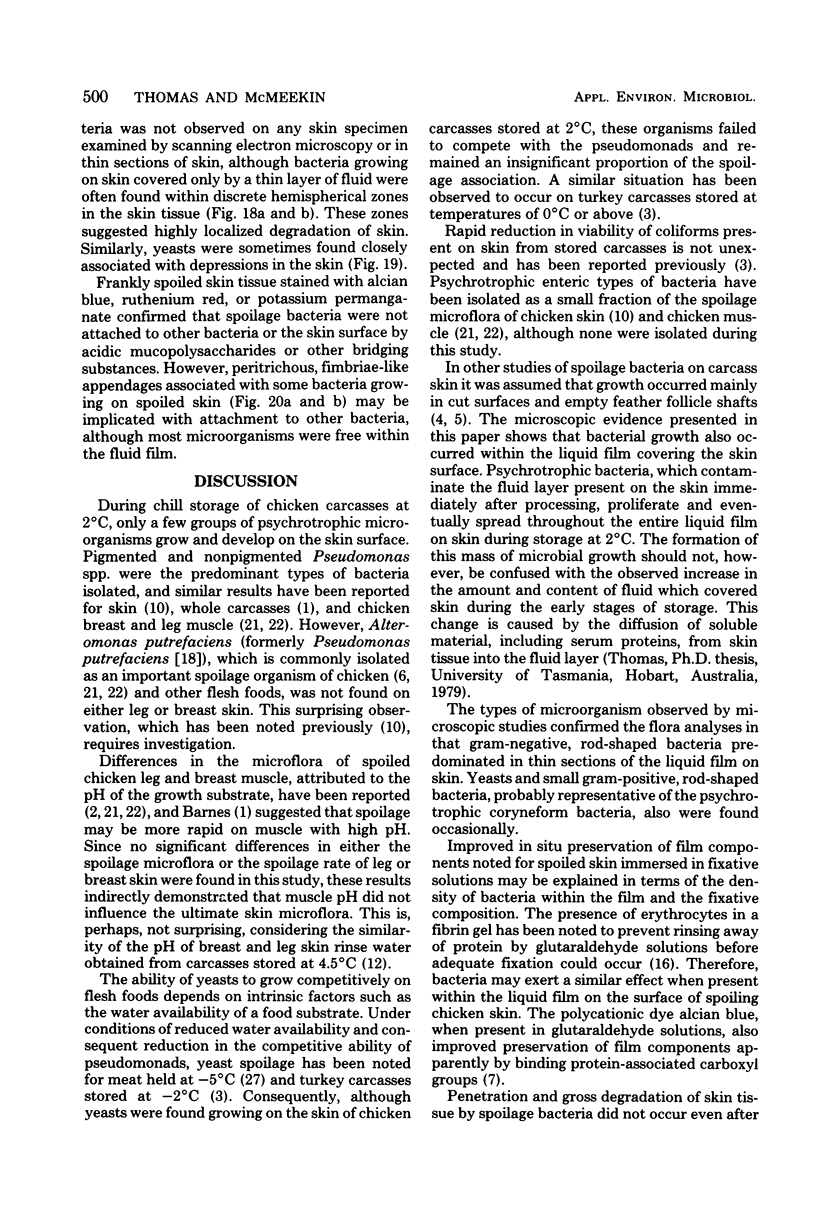

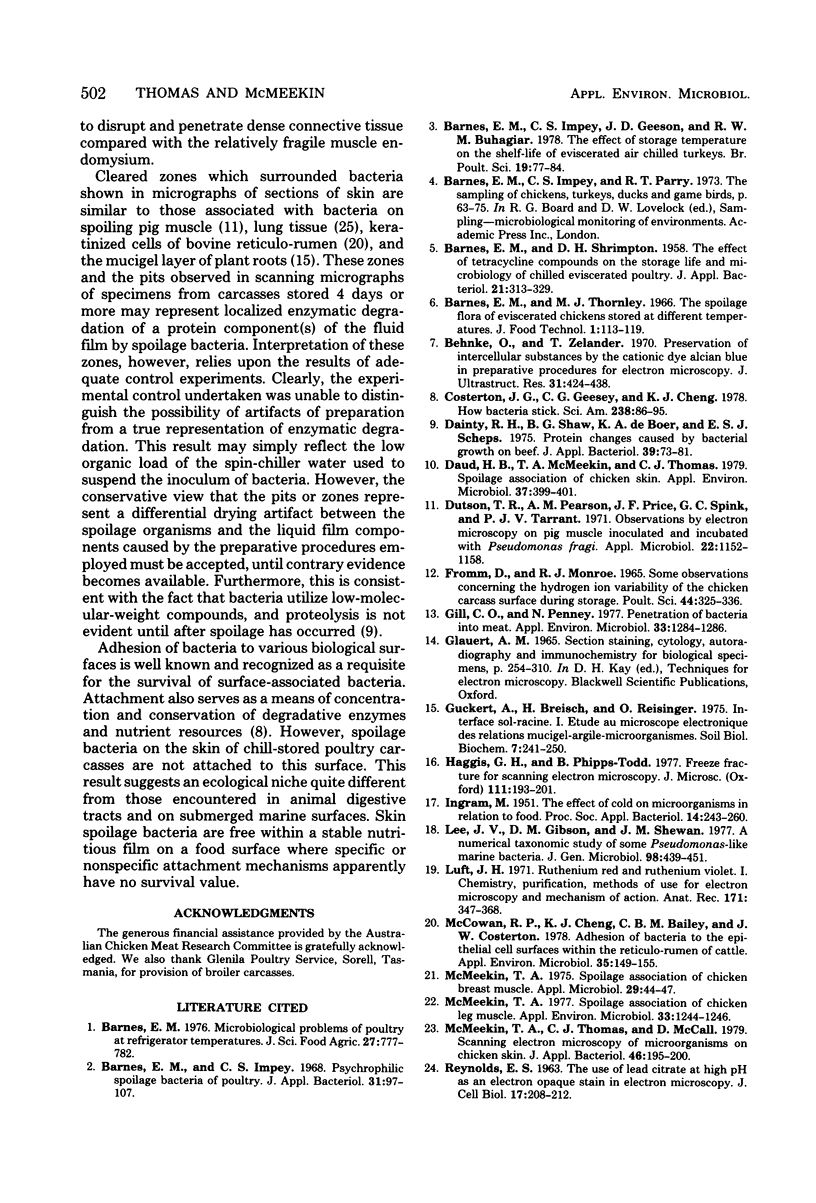

Images in this article
Selected References
These references are in PubMed. This may not be the complete list of references from this article.
- Barnes E. M., Impey C. S. Psychrophilic spoilage bacteria of poultry. J Appl Bacteriol. 1968 Mar;31(1):97–107. doi: 10.1111/j.1365-2672.1968.tb00345.x. [DOI] [PubMed] [Google Scholar]
- Barnes E. M. Microbiological problems of poultry at refrigerator temperatures--a review. J Sci Food Agric. 1976 Aug;27(8):777–782. doi: 10.1002/jsfa.2740270813. [DOI] [PubMed] [Google Scholar]
- Behnke O., Zelander T. Preservation of intercellular substances by the cationic dye alcian blue in preparative procedures for electron microscopy. J Ultrastruct Res. 1970 Jun;31(5-6):424–428. doi: 10.1016/s0022-5320(70)90159-0. [DOI] [PubMed] [Google Scholar]
- Costerton J. W., Geesey G. G., Cheng K. J. How bacteria stick. Sci Am. 1978 Jan;238(1):86–95. doi: 10.1038/scientificamerican0178-86. [DOI] [PubMed] [Google Scholar]
- Dainty R. H., Shaw B. G., De Boer K. A., Scheps E. S. Protein changes caused by bacterial growth on beef. J Appl Bacteriol. 1975 Aug;39(1):73–81. doi: 10.1111/j.1365-2672.1975.tb00547.x. [DOI] [PubMed] [Google Scholar]
- Daud H. B., McMeekin T. A., Thomas C. J. Spoilage association of chicken skin. Appl Environ Microbiol. 1979 Mar;37(3):399–401. doi: 10.1128/aem.37.3.399-401.1979. [DOI] [PMC free article] [PubMed] [Google Scholar]
- Dutson T. R., Pearson A. M., Price J. F., Spink G. C., Tarrant P. J. Observations by electron microscopy on pig muscle inoculated and incubated with Pseudomonas fragi. Appl Microbiol. 1971 Dec;22(6):1152–1158. doi: 10.1128/am.22.6.1152-1158.1971. [DOI] [PMC free article] [PubMed] [Google Scholar]
- FROMM D., MONROE R. J. SOME OBSERVATIONS CONCERNING THE HYDROGEN ION VARIABILITY OF THE CHICKEN CARCASS SURFACE DURING STORAGE. Poult Sci. 1965 Mar;44:325–336. doi: 10.3382/ps.0440325. [DOI] [PubMed] [Google Scholar]
- Gill C. O., Penney N. Penetration of bacteria into meat. Appl Environ Microbiol. 1977 Jun;33(6):1284–1286. doi: 10.1128/aem.33.6.1284-1286.1977. [DOI] [PMC free article] [PubMed] [Google Scholar]
- Haggis G. H., Phipps-Todd B. Freeze-fracture for scanning electron microscopy. J Microsc. 1977 Nov;111(2):193–201. doi: 10.1111/j.1365-2818.1977.tb00059.x. [DOI] [PubMed] [Google Scholar]
- Luft J. H. Ruthenium red and violet. I. Chemistry, purification, methods of use for electron microscopy and mechanism of action. Anat Rec. 1971 Nov;171(3):347–368. doi: 10.1002/ar.1091710302. [DOI] [PubMed] [Google Scholar]
- McCowan R. P., Cheng K. J., Bailey C. B., Costerton J. W. Adhesion of bacteria to epithelial cell surfaces within the reticulo-rumen of cattle. Appl Environ Microbiol. 1978 Jan;35(1):149–155. doi: 10.1128/aem.35.1.149-155.1978. [DOI] [PMC free article] [PubMed] [Google Scholar]
- McMeekin T. A. Spoilage association of chicken breast muscle. Appl Microbiol. 1975 Jan;29(1):44–47. doi: 10.1128/am.29.1.44-47.1975. [DOI] [PMC free article] [PubMed] [Google Scholar]
- McMeekin T. A. Spoilage association of chicken leg muscle. Appl Environ Microbiol. 1977 Jun;33(6):1244–1246. doi: 10.1128/aem.33.6.1244-1246.1977. [DOI] [PMC free article] [PubMed] [Google Scholar]
- McMeekin T. A., Thomas C. J., McCall D. Scanning electron microscopy of microorganisms on chicken skin. J Appl Bacteriol. 1979 Feb;46(1):195–200. doi: 10.1111/j.1365-2672.1979.tb02600.x. [DOI] [PubMed] [Google Scholar]
- REYNOLDS E. S. The use of lead citrate at high pH as an electron-opaque stain in electron microscopy. J Cell Biol. 1963 Apr;17:208–212. doi: 10.1083/jcb.17.1.208. [DOI] [PMC free article] [PubMed] [Google Scholar]
- Rodgers F. G., Macrae A. D., Lewis M. J. Electron microscopy of the organism of Legionnaires' disease. Nature. 1978 Apr 27;272(5656):825–826. doi: 10.1038/272825a0. [DOI] [PubMed] [Google Scholar]
- Thomas C. J., McMeekin T. A. Contamination of broiler carcass skin during commercial processing procedures: an electron microscopic study. Appl Environ Microbiol. 1980 Jul;40(1):133–144. doi: 10.1128/aem.40.1.133-144.1980. [DOI] [PMC free article] [PubMed] [Google Scholar]




